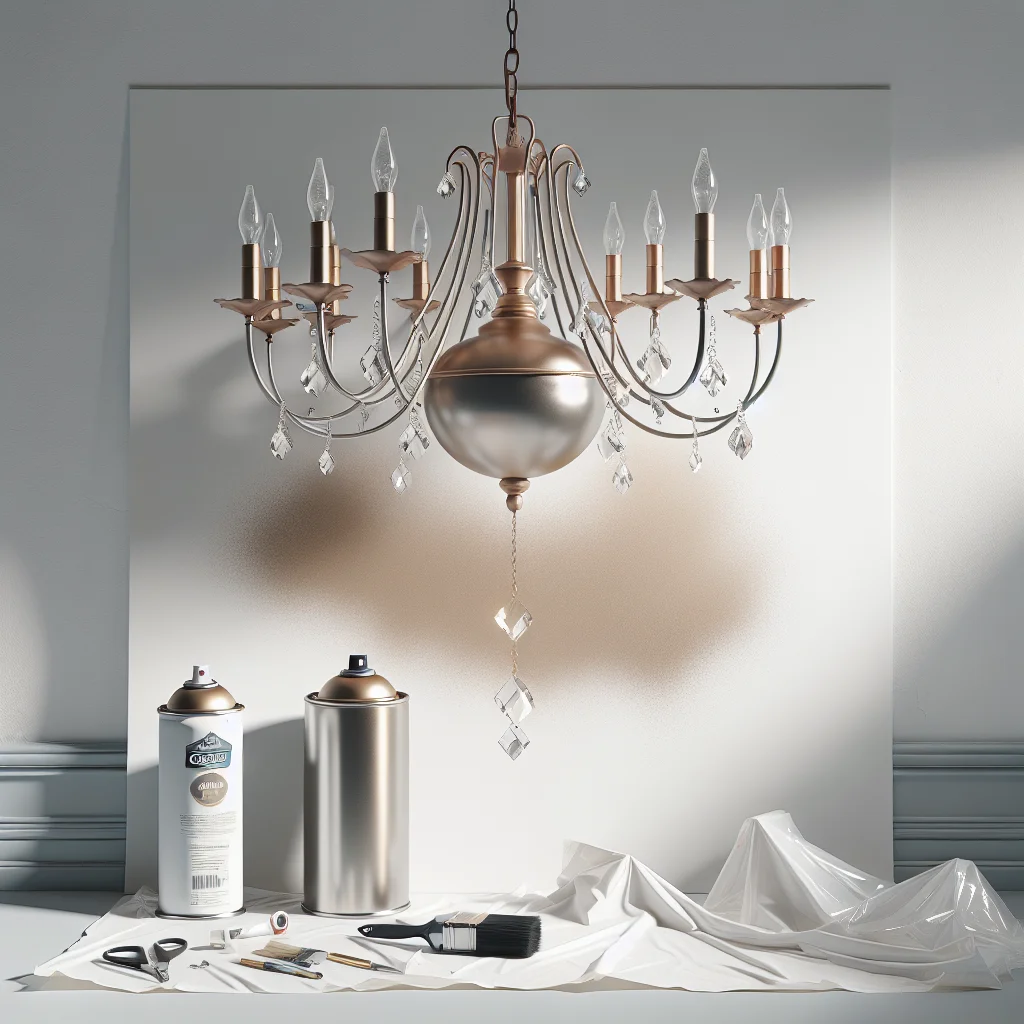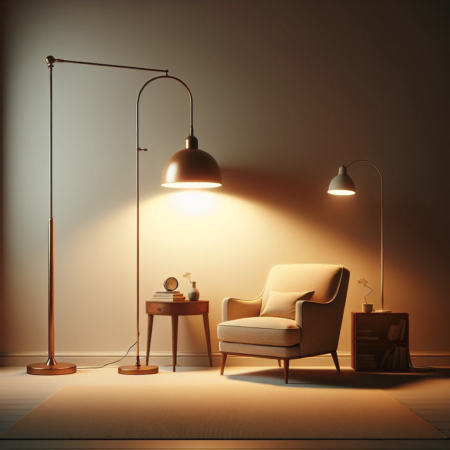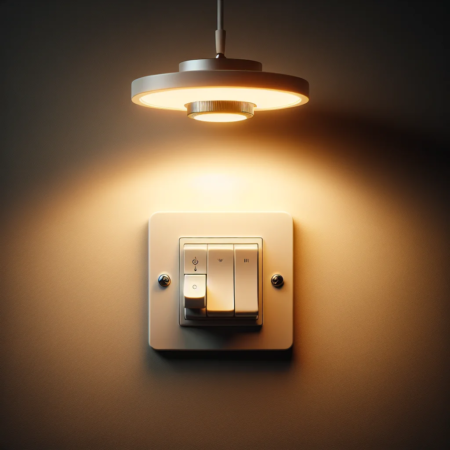Check out this Youtube video: Learn how to paint a vintage chandelier without losing its value, perfect for DIY lighting projects enthusiasts!

Contents
Choosing the Right Paint
When choosing the right paint for your chandelier, it is important to prioritize quality, color options, and paint finish options. Look for paints with high pigment concentration and low VOC levels for better coverage and durability. Consider neutral tones like gray, beige, or white for timeless elegance, as well as earth tones for a warm and inviting ambiance. Opt for flat or matte finishes for a sophisticated look, satin or semi-gloss for added elegance, and high-gloss finishes for a striking, lustrous effect.
Quality of Paint
When it comes to choosing the right paint for your chandelier, quality is paramount. Look for paints with high pigment concentration, as this ensures better coverage and durability. Additionally, consider the solvents, binders, and additives used in the paint, as these elements directly impact its quality. Opt for paints with low levels of volatile organic compounds (VOCs) to minimize harmful emissions and ensure a safer painting process. To evaluate the quality of paint, assess factors such as coverage, washability, and overall performance.
Color Options
Selecting the perfect color for your chandelier can elevate its aesthetic appeal. Consider neutral tones such as gray, beige, or white, which offer timeless elegance and versatility. These colors can seamlessly complement various interior design styles and color schemes. Moreover, explore earth tones for a warm and inviting ambiance. From muted shades of brown and green to subdued hints of orange and red, earth tones can infuse a cozy charm into your chandelier, creating a captivating focal point in any space.
Paint Finish Options
The paint finish plays a crucial role in defining the visual impact of your chandelier. Flat or matte finishes are ideal for achieving a sophisticated and understated look, as they absorb more light and minimize imperfections. Alternatively, satin and semi-gloss finishes impart a subtle sheen, adding a touch of elegance and facilitating easy maintenance. For a striking, lustrous effect, consider high-gloss finishes, which reflect light to create a visually stunning centerpiece.
| Quality of Paint | Color Options | Paint Finish Options |
|---|---|---|
| High pigment concentration | Neutral tones such as gray, beige, or white | Flat or matte finishes for a sophisticated look |
| Low VOC levels | Earth tones for a warm and inviting ambiance | Satin and semi-gloss finishes for added elegance |
| Coverage, washability, performance | Muted shades of brown, green, gray, or beige | High-gloss finishes for a striking, lustrous effect |
Preparing the Chandelier for Painting
Prepping the chandelier for painting involves cleaning it with a gentle solution of warm water and mild dish soap or glass cleaner, ensuring every nook and cranny is thoroughly cleaned. Additionally, lightly sand the entire surface using 100-grit sandpaper to create a roughened texture for optimal paint adhesion. To protect surrounding areas, shield them with plastic sheeting or a drop cloth to prevent paint splatter and cover the chandelier’s sockets with painters’ tape, turning off the home’s electrical supply if necessary for safety.
Cleaning the chandelier
To ensure a sparkling chandelier, start by preparing a gentle cleaning solution using warm water and a small amount of mild dish soap or glass cleaner. Do not use abrasive cleaners as they could damage the surface.
For crystal chandeliers, a mixture of dish soap and warm water is preferred to maintain their sparkle. Gently wipe the chandelier with the cleaning solution using a soft cloth, ensuring every nook and cranny is thoroughly cleaned.
To rid the chandelier of dust and grime, wipe it down with a damp cloth, followed by immediate drying to prevent water spots.
If the chandelier has been relatively neglected, another effective cleaning solution involves a 1:3 ratio of white vinegar to water or a 1:3 ratio of isopropyl alcohol and water. After applying the cleaning solution, ensure the chandelier is thoroughly dried to prevent water streaks from forming on the surface.
Sanding the surface
Before painting the chandelier, it’s crucial to ensure the surface has adequate “tooth” for the paint to adhere to. Lightly sand the entire surface of the chandelier using 100-grit sandpaper to create a roughened texture.
This process will prepare the existing finish and provide an optimal base for the paint to bond with the surface. After sanding, be sure to remove any excess sanding grit by using a tack cloth to achieve a smooth and prep-ready surface.
Protecting surrounding areas
Shield the surrounding areas from potential paint splatter or debris by laying down a quality plastic sheeting or drop cloth. This safeguard will prevent accidental staining or damage to the floors, furniture, or any other adjacent items.
Additionally, remember to cover the chandelier’s sockets with painters’ tape and remove socket sleeves before initiating the painting process. For further precaution, turn off the home’s electrical supply if wires will be exposed during the painting project.
In essence, this protective step is critical to maintaining a clean and hazard-free painting environment.
| Cleaning the Chandelier | Sanding the Surface | Protecting surrounding Areas |
|---|---|---|
| 1. Prepare a gentle cleaning solution using warm water and mild dish soap or glass cleaner. Ensure every nook and cranny is thoroughly cleaned.2. Use a soft cloth to wipe down the chandelier with the cleaning solution.3. Alternately, use a 1:3 ratio of white vinegar to water or isopropyl alcohol and water for a deeper clean.4. Thoroughly dry the chandelier post-cleaning to prevent water streaks. | 1. Lightly sand the entire surface of the chandelier using 100-grit sandpaper to create a roughened texture. Remove excess sanding grit with a tack cloth.2. This process will facilitate excellent adhesion of paint to the chandelier’s surface. | 1. Shield surrounding areas with plastic sheeting or drop cloth to prevent paint splatter.2. Cover the chandelier’s sockets with painters’ tape.3. Turn off the home’s electrical supply if wires will be exposed.4. This precaution is vital to maintaining a clean and hazard-free painting environment. |
Applying the Paint
Spray painting the chandelier:
To spray paint a chandelier, start by disassembling the chandelier into its individual parts. Use a high-quality spray paint specifically made for metal surfaces, such as Rust-Oleum’s metallic spray paint in oil-rubbed bronze, for a durable and elegant finish. Hang the chandelier parts from a rod or a clothesline to ensure all angles are accessible for smooth and even coverage. Apply spray paint in a well-ventilated area using smooth, steady strokes to avoid drips and uneven coverage. Allow the first coat to dry completely before applying subsequent coats to achieve a professional and uniform finish.
Applying multiple coats:
When applying multiple coats of paint, ensure that each coat is given ample time to cure before applying the next. For water-based paints, wait approximately 2 to 4 hours between coats, while oil-based paints require a full 24 hours for each coat to dry. Apply each subsequent coat using the same technique to ensure consistent coverage and color intensity. Avoid rushing the process to prevent smudging or ruining the previous layers. Properly layered coats enhance the depth and richness of the final color while providing added protection from wear and tear.
Allowing the paint to dry properly:
After applying the final coat of paint, it is crucial to allow the chandelier to dry thoroughly before reassembly. Typically, water-based paint requires 24 hours to fully cure, while oil-based paint may necessitate even longer drying times. Ensure the chandelier pieces are kept in a dust-free and well-ventilated environment throughout the drying period to prevent dust particles from marring the finish. Once completely dry, carefully reassemble the components to restore the chandelier to its former glory, ready to illuminate and enhance the living space.
Question: How to Paint a Chandelier?
To paint a chandelier, start by disassembling the fixture and thoroughly cleaning the surface. Apply a coat of metal primer before using a high-quality metallic spray paint to evenly coat the chandelier. Make sure to use light, sweeping motions with the spray paint and apply multiple thin coats for even coverage, and consider using metallic-specific spray paint for a stunning finish.
Step-by-step guide to painting a chandelier
When painting a chandelier, first start by disassembling the fixture. Remove any glass pieces or shades, and detach the chandelier from the ceiling.
Thoroughly clean the surface to remove any dust or dirt. Next, apply a coat of metal primer to ensure better paint adhesion.
Once the primer dries, use a high-quality metallic spray paint to evenly coat the chandelier, ensuring all angles and intricate details are covered. Allow the chandelier to dry completely before reassembling and reinstalling it.
Tips for achieving an even coat
To achieve a smooth and even coat when painting a chandelier, it’s essential to use light, sweeping motions with the spray paint to avoid drips or uneven coverage. Always hold the can about 8-12 inches away from the surface and apply multiple thin coats rather than a single heavy coat.
This approach helps prevent clumping and allows for better control over the application. Additionally, consider using a metallic-specific spray paint to create a stunning finish that mimics the look of authentic metal.
Common mistakes to avoid
| Common Mistake | Solution |
|---|---|
| Neglecting proper cleaning before painting | Ensure thorough cleaning to remove dirt and grime |
| Applying a heavy coat of paint | Opt for multiple thin coats to achieve even coverage |
| Skipping the primer | Always use a metal primer for better paint adhesion |
| Ignoring safety precautions during disassembly | Turn off electricity and handle delicate parts with care |

Finishing Touches
After reassembling the chandelier, it’s important to consider adding embellishments to enhance its elegance and style. Yes, you can use colored chandelier crystal prisms, pendalogues, or trimmings to give the chandelier a touch of sophistication and personality. Carefully attach the embellishments to the existing fixtures, ensuring they are evenly distributed and securely fastened to complement the overall aesthetic of the chandelier. Finally, perform a final inspection and touch up any areas that require additional paint or attention to ensure a flawless finish.
Reassembling the chandelier
To reassemble the chandelier, start by carefully reattaching the chandelier light fixture to the chain after making any necessary repairs. Next, reconnect the wires in the junction box and securely fasten the chandelier to ensure it hangs safely and evenly.
Double-check the connections and ensure all components are properly aligned and secure. Once reassembled, turn on the power to ensure everything is functioning correctly.
Adding embellishments (optional)
When it comes to adding embellishments to your chandelier, consider using colored chandelier crystal prisms, pendalogues, or trimmings to enhance its elegance and style. These embellishments are optional but can add a touch of sophistication and personality to your chandelier. Carefully attach the embellishments to the existing fixtures, ensuring they are evenly distributed and securely fastened. Take your time to arrange them in a visually appealing manner to complement the overall aesthetic of the chandelier.
Final inspection and touch-ups
Before completing the painting process, perform a meticulous final inspection of the chandelier. Look for any missed spots or imperfections in the paint, ensuring a flawless finish.
Touch up any areas that require additional paint or attention, and allow sufficient time for the paint to fully dry. Once satisfied with the final result, perform a final inspection to ensure all components are properly assembled, embellishments are securely in place, and the chandelier is ready to illuminate its surroundings.





